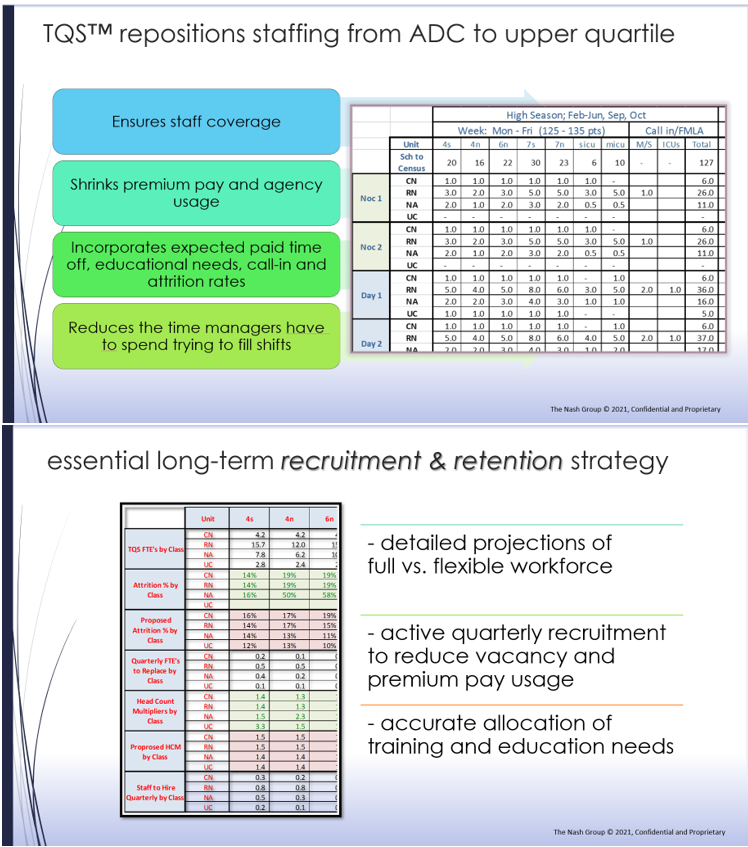What solutions exist then to improve the nursing shortage? (continued)
Group 2 is a collection of hiring and retention and operational practices that should be integrated into all healthcare organizations.
Let’s start with the operational methodologies, but first a side note: I’m often told that none of these methodologies matter when “we have so many openings!”. The flaw in that thinking is that the shortage is due in part to a widespread lack of these methodologies and that they form the core of sound long-term hiring practices and estimates of staffing needs for the right places at the right time.
- Goodbye to the Average Daily Census (ADC)…it’s so amazing to see that most hospitals plan staffing needs based on a revenue metric that doesn’t even count patients! Managers who hire assignments are constrained by activity projections that don’t take into account demand and don’t account for seasonality and weekly variations.
- The industry needs hours of care past (HPPD) and other inconsequential metrics to compare and plan for labor needs (especially for nursing). Care is not delivered based on HPPDs, nor can staffing needs be planned at a volume-driven rate that ignores the cost of skill mix. It’s no wonder why managers can’t effectively forecast hiring needs. Instead, the industry needs to model allocations and size them economically.
- Next are the proverbial flexible workforce and divisional groups. There is a large knowledge gap in most hospitals on how to determine the correct ratio of fully staffed to flexible staffing (Staff Count Multipliers – HCM). The consequence of poor HCM estimates is the belief among nursing leaders and recruiters that nurses cannot be hired unless full-time employment is offered. With the right HCM, managers will quickly discover many opportunities to offer staff reduced hours, seasonal shifts, and rotating schedules.
- Incentivized by poor budgets, time and attendance software built to support bad practices, and recruiters overwhelmed by job openings, nursing leaders lack training to set up Top Quartile Schedules (TQS) that take retention into account and variations in demand. The seasonal TQS plan is the right way to account for staffing needs and most job and activity contingencies, including census, call-outs, FMLA, and attrition rates.
- TQS and HCM are critical to meeting Advance Quarterly Recruiting Needs (QRN). This tactic is a complete divisional recruiting plan that managers and HR. they can continue to preempt attrition and transfers. It also helps “feeding units”, those units from which staff are constantly moving, to other areas of the hospital to keep staff to meet their needs.

